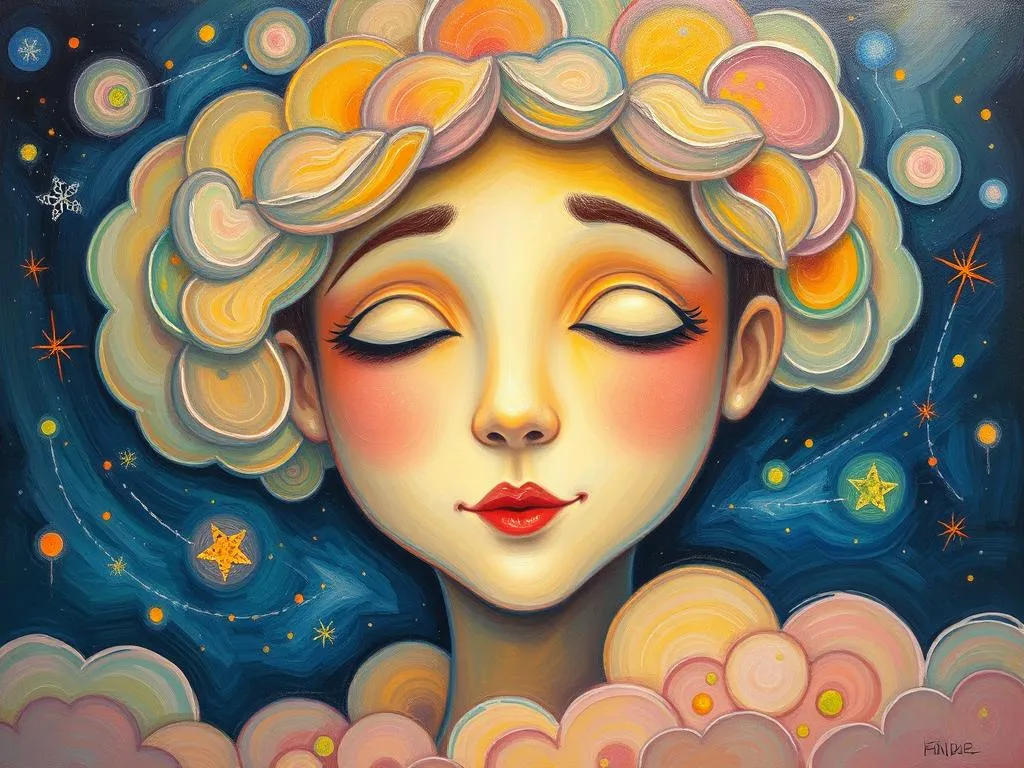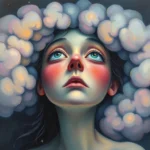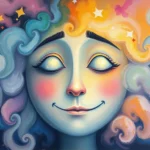
Introduction
Dreams have long been a source of fascination and mystery, serving as a canvas for our subconscious thoughts, fears, and desires. Among the myriad forms dreams take, the appearance of faces stands out as particularly compelling. Whether familiar or unfamiliar, the faces we encounter in dreams can reveal significant insights into our inner selves. This topic intrigues people for various reasons: it taps into the universal human experience of connection and identity, while also offering a glimpse into our hidden emotions and thoughts. In this article, we will explore the symbolism and meaning behind faces in dreams, examine key scenarios and variations, and discuss how these dreams can connect to our real-life experiences.
Symbolism and Meaning
When we dream of faces, we’re often confronted with a rich tapestry of symbolism. The face is a primary means of communication, representing not only identity but also emotions and intentions. It can be a mirror reflecting our own feelings or an enigmatic presence that challenges our understanding of self.
Familiar faces often evoke feelings of comfort or unresolved issues. Seeing someone you know can signal a desire for connection or the need to address lingering emotions tied to that person. Conversely, encountering unknown faces might indicate a confrontation with parts of yourself that you have yet to acknowledge. These faces can symbolize new possibilities, fears, or even aspects of your personality that you may not have fully explored.
In some interpretations, the facial expressions seen in dreams carry weighty significance. A smiling face might suggest happiness or contentment, while a frowning face could indicate underlying distress or concern. The emotional resonance of the face can provide clues about your current state of mind and emotional health.
From a psychological perspective, Carl Jung suggested that faces in dreams can represent aspects of the collective unconscious. This means that the faces we see might reflect not only our personal experiences but also universal themes and archetypes. The anima and animus, for example, represent the feminine and masculine aspects of the psyche and may be personified in the faces of our dreams. Thus, the interpretation of faces can vary widely depending on the context and the dreamer’s personal experiences.
Key Scenarios and Variations
The scenarios involving faces in dreams can be as diverse as the dreamers themselves. Each variation offers a unique lens through which to interpret the experience.
One common scenario is dreaming of a lost loved one. In this context, the face can serve as a poignant reminder of grief, love, or unresolved issues. If the face appears serene, it might suggest acceptance and closure, while a distressed expression may indicate a need for healing or reconciliation.
Another prevalent variation involves strangers’ faces. Dreaming of unfamiliar faces can prompt feelings of unease or curiosity. This may signal a journey into your subconscious, inviting you to confront hidden fears or uncharted territories of your personality. Such dreams can inspire you to explore your life choices or relationships that may be influencing your emotional state.
The scenario of masks is also worth mentioning. If you dream of faces obscured by masks, it may indicate feelings of deception—either from yourself or others. The mask serves as a barrier, hiding true emotions and intentions. This could point to personal struggles with authenticity or the need to uncover hidden truths in your waking life.
Additionally, a dream featuring a mirror reflecting a face can signify self-reflection and introspection. This scenario often invites the dreamer to evaluate their self-image and consider how they perceive themselves versus how they are perceived by others. It offers a chance for growth and self-awareness, urging you to acknowledge both strengths and weaknesses.
In contrast, a dream where faces morph or change can symbolize transformation or uncertainty. This might indicate a period of transition in your life where your identity is evolving. The shifting faces could represent the different roles you play or the various facets of your personality that are coming to light.
Lastly, consider the impact of facial features. Dreaming of exaggerated or unique facial characteristics—such as unusually large eyes or pronounced features—may symbolize heightened awareness or a focus on certain aspects of your life. These features could represent traits you admire or dislike in yourself or others, serving as a catalyst for deeper self-exploration.
Real-Life Connections and Takeaways
Connecting dreams of faces to real-life situations can provide valuable insights into your emotional landscape. Reflecting on the individuals encountered in your dreams can lead to richer understanding and self-awareness. Ask yourself what feelings arise when you think about the people whose faces you see. Are there unresolved emotions or issues lingering in your life related to these individuals?
Another approach is to consider the context of the dream. Were you feeling anxious, joyful, or confused while interacting with these faces? Your emotional state during the dream can offer clues about your waking life. If the face evoked a strong positive emotion, it may indicate a need to nurture relationships or aspects of yourself that bring joy. Conversely, if the face sparked discomfort, it could be a signal to address underlying issues or fears.
Engaging in self-reflection is essential for interpreting these dreams. Keeping a dream journal can be beneficial. Write down your dreams as soon as you wake up, paying attention to the faces you encounter, their expressions, and any emotions that arise. Over time, patterns may emerge that can lead to deeper insights about your feelings and experiences.
You might also find it helpful to explore your personal relationships. The faces in your dreams may represent dynamics in your life or aspects of yourself. Reflect on how your interactions with others affect your emotional state. Are you being authentic in your relationships, or do you feel the need to wear a mask? Identifying areas where you feel disconnected can guide you toward more fulfilling connections.
Finally, consider the idea of acceptance and growth. Dreams of faces can encourage you to embrace change and transformation. Recognizing the different faces and expressions can prompt you to accept the complexity of your identity. Allow yourself the freedom to evolve, and acknowledge that each face represents a part of your journey.
In conclusion, the faces we encounter in dreams serve as profound symbols of our inner selves. By examining their meanings, recognizing variations, and connecting these dreams to our waking lives, we can unlock valuable insights about our emotions, relationships, and identities. As you reflect on your own dreams, remember to approach these experiences with curiosity and openness. The journey of understanding your dreams can lead to a deeper connection with yourself and a richer, more fulfilling life.







